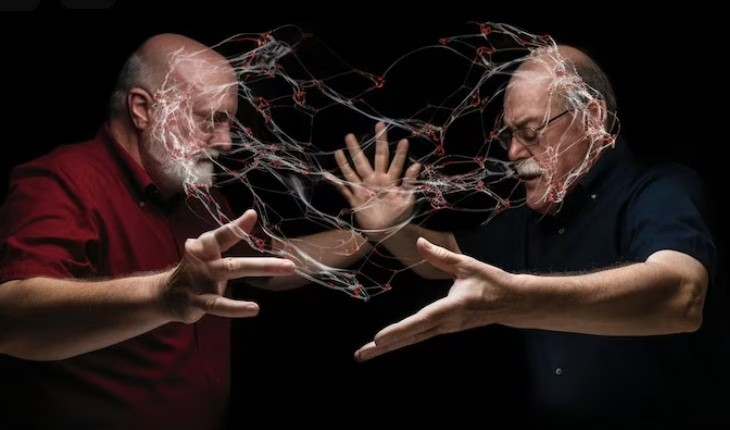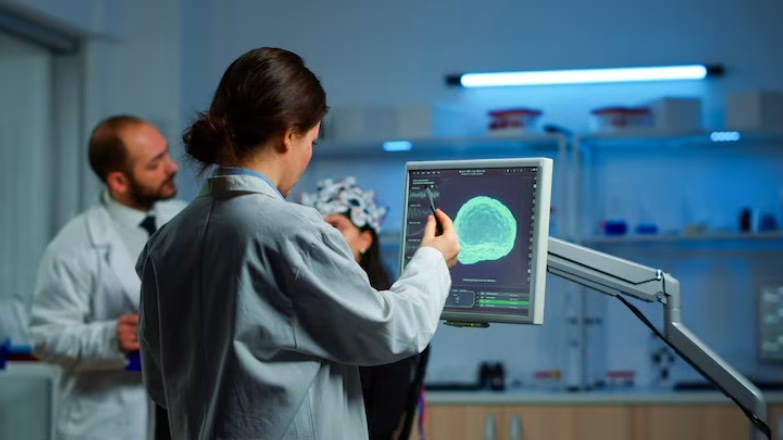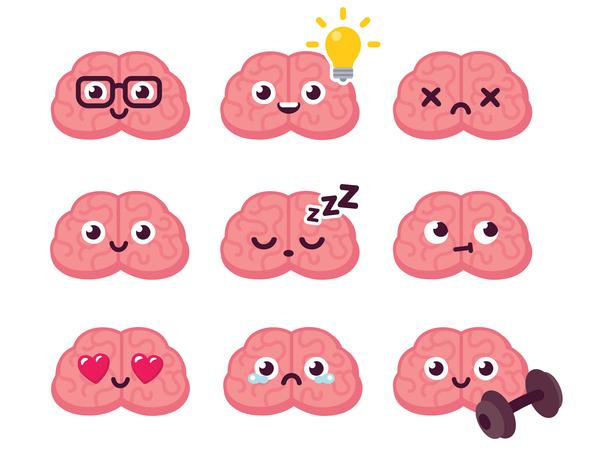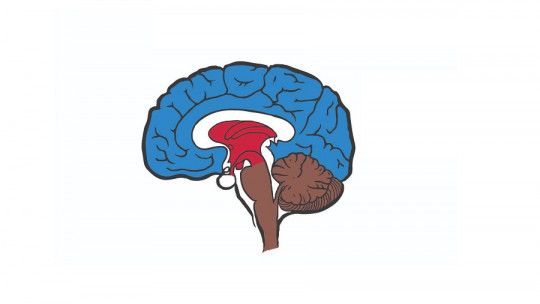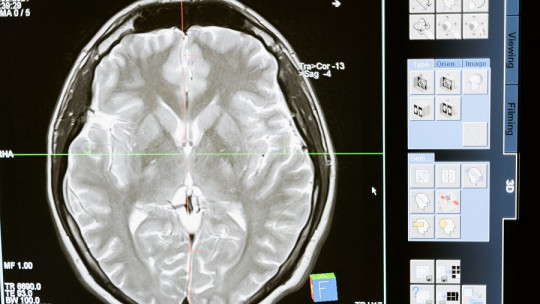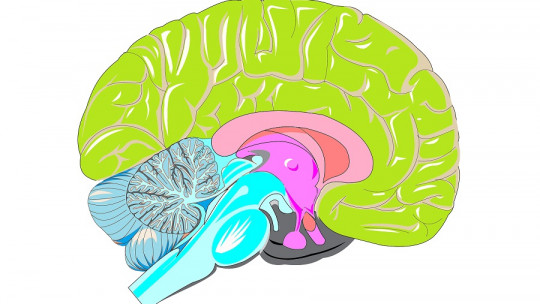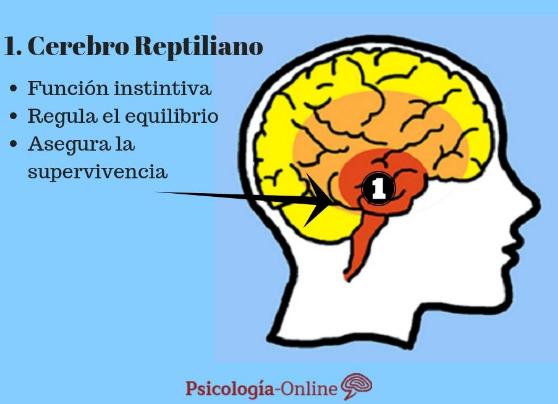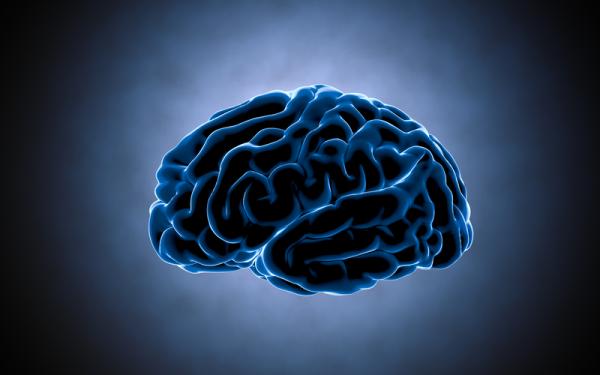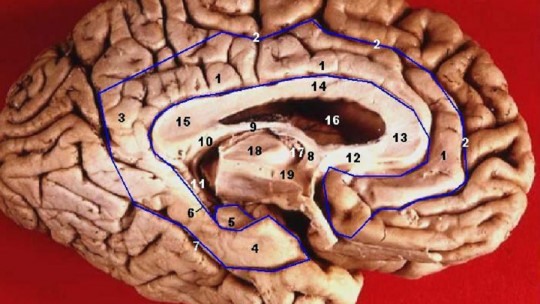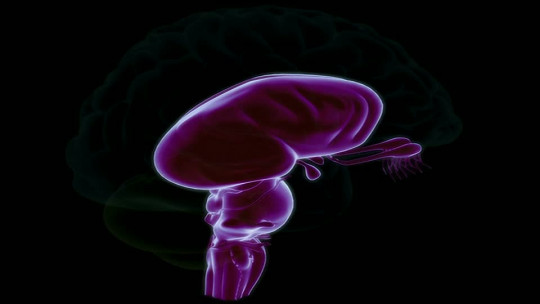The human brain is the most complex system known. This means that, if you want to understand its operation, it is necessary to find patterns and regularities in its operation and structure; In other words, we must try to formulate useful and simple explanations about this set of organs.
Paul MacLean’s Triune Brain, which is sometimes known as the 3-brain theory, has been very popular for years for grouping various regions of the brain into different groups that, as this neuroscientist proposed, perform different tasks. The differentiated structures would be, according to MacLean, the reptilian complex, the limbic system and the neocortex.
The Model of the Three Brains presents a fascinating framework for understanding the complexities of the human brain and its functioning. Developed by neuroscientist Paul MacLean in the 1960s, this model proposes that the human brain consists of three distinct regions, each with its own evolutionary history, functions, and influences on behavior. In this article, we embark on a journey to explore the intricacies of the three-brain model, shedding light on its implications for psychology, neuroscience, and everyday life.
Understanding the idea of the triune brain
Paul MacLean’s triple brain idea is based on the idea that three different brain systems live in the human brain, with their own operating logic, and that each of them has appeared in our evolutionary line sequentially, one on top of the other. This means, among other things, that these three brains would be relatively independent and that they would relate to each other following a hierarchy, depending on their age and the importance of their functions for our survival.
The reptilian complex, for example, being the first to appear, would be the structure that carries out the most basic and most important functions to survive in the here and now, while the neocortex, being the structure that appeared most recently in The evolutionary line that leads to Homo sapiens would be the one in charge of the most refined and complex functions.
The logic that follows this conception of the human brain is very reminiscent of a way of understanding evolution as a process in which the new is accumulating on the old, so that these two parts maintain relative independence from each other, although they affect each other. He also recalls the idea that the emotional and the rational are part of two diametrically opposed psychological dimensions, and that where there is one, the other does not fit.
What Is the Triune Brain Model?
The triune brain model is a metaphorical and evolutionary perspective that breaks the brain down into three hierarchical layers, each representing a stage in evolutionary development:
- Reptilian Brain (Basal Ganglia)
- Limbic Brain (Emotional Center)
- Neocortex (Rational Mind)
Each of these “brains” plays a different role in how we process information, form relationships, and respond to our environment. While modern neuroscience has identified that these areas are more interconnected than initially believed, the triune brain remains a powerful framework to understand psychological behavior, emotional reaction, and even conflict within ourselves.
Let’s explore each of the three components in detail.
The parts of the brain according to Paul MacLean
Now that we have briefly reviewed the ideas on which the triune brain model is based, let’s look at its parts separately:
Reptilian Brain (Brainstem and Basal Ganglia)
The reptilian brain is the most ancient part of our brain. It includes structures such as the brainstem and basal ganglia, which are responsible for autonomic and instinctual functions. This brain evolved more than 500 million years ago and is shared by reptiles, which is how it got its name.
Core Functions of the Reptilian Brain:
- Basic survival instincts: fight, flight, freeze
- Territorial behavior
- Habits and compulsive routines
- Aggression and dominance
- Reproductive instincts
- Heartbeat, respiration, digestion
When someone feels threatened, the reptilian brain takes over almost instantly. It bypasses reasoning and emotion to activate automatic behaviors meant to protect us, such as running from danger or preparing for a fight. This is also the part of the brain that governs repetitive routines, rituals, and even addiction.
Real-Life Example:
Imagine someone cuts you off in traffic. Before you can process what happened logically or emotionally, your reptilian brain flares up, increasing your heart rate and possibly triggering anger or a reflexive gesture. This is your ancient survival circuitry doing its job.
The reptilian brain, also known as the primitive or instinctual brain, represents the oldest and most primitive region of the human brain. It encompasses the brainstem and basal ganglia and is responsible for regulating essential functions such as breathing, heart rate, and basic survival instincts. Derived from the brain structures of early reptiles, the reptilian brain governs instinctual behaviors associated with survival and self-preservation.
For Paul MacLean, the concept of the reptilian complex served to define the lowest area of the forebrain, where the so-called basal ganglia are located, and also areas of the brain stem and cerebellum responsible for maintaining the functions necessary for immediate survival. According to MacLean, these areas were related to the stereotyped and predictable behaviors that according to him define poorly evolved vertebrate animals, such as reptiles.
This structure would be limited to making simple and impulsive behaviors appear, similar to rituals that are always repeated in the same way, depending on the physiological states of the organism: fear, hunger, anger, etc. It can be understood as a part of the nervous system that is limited to executing genetically programmed codes when the right conditions are met.
Limbic System (Mammalian Brain)
Located above the reptilian brain, the limbic system emerged in early mammals. This brain gave rise to emotion, memory, and social bonding. It includes important structures such as the amygdala, hippocampus, hypothalamus, and thalamus.
The limbic system adds emotional color to our experiences. It helps us remember the past, feel empathy, seek love, and avoid pain. This is also the part of the brain that reacts powerfully to threats or rewards—especially when connected to past trauma or pleasurable memory.
Core Functions of the Limbic Brain:
- Emotional processing (fear, joy, sadness, anger)
- Attachment and relationships
- Motivation and reward
- Long-term memory storage
- Hormonal responses via the hypothalamus
- Stress and arousal regulation
When we experience strong emotions—whether it’s the warmth of a hug or the anxiety of rejection—it’s the limbic system that’s most active.
Real-Life Example:
If you’ve ever felt a knot in your stomach from heartbreak, or tears came to your eyes without warning during a song, that’s your limbic brain reacting. It bridges your experiences to emotional meaning.
The limbic system comprises structures such as the amygdala, hippocampus, and hypothalamus, collectively known as the “emotional brain.” Evolving from the brains of early mammals, the limbic system plays a central role in processing emotions, forming memories, and regulating physiological responses to stress. It is intricately involved in various aspects of social behavior, attachment, and emotional processing, shaping our subjective experiences and interpersonal interactions.
The limbic system, which according to MacLean appeared with the most primitive mammals and on the basis of the reptilian complex, was presented as a structure responsible for the appearance of the emotions associated with each of the experiences that are lived.
Its usefulness has to do with learning. If a behavior produces pleasant emotions, we will tend to repeat it or try to change our environment so that it occurs again, while if it produces pain, we will remember that experience and avoid having to experience it again. Thus, this component would have a fundamental role in processes such as classical conditioning or operant conditioning.
Neocortex (Human Brain)
The neocortex is the most recent evolutionary addition to the brain and is uniquely developed in humans. It is the seat of consciousness, allowing for complex thought, language, imagination, moral reasoning, and problem-solving.
It wraps around both the limbic and reptilian brain and includes the prefrontal cortex, which is essential for executive functions like planning, attention, judgment, and decision-making.
Core Functions of the Neocortex:
- Language and symbolic communication
- Abstract thought and analysis
- Moral and ethical reasoning
- Logic and rational decision-making
- Conscious awareness and reflection
- Empathy and future planning
The neocortex allows us to pause, think, and evaluate rather than acting purely on impulse or emotion.
Real-Life Example:
You’re in an argument with someone. Your reptilian brain urges you to yell; your limbic system wants to cry or shut down. But your neocortex helps you take a breath, assess the consequences, and respond thoughtfully. It’s the part that asks, “Is this helpful? Is there another way to solve this?”
The neocortex, often referred to as the “thinking brain,” is the most recently evolved and distinctly human region of the brain. It encompasses the cerebral cortex, responsible for higher-order cognitive functions such as reasoning, language, decision-making, and complex problem-solving. The neocortex enables humans to engage in abstract thinking, planning for the future, and executing sophisticated behaviors, distinguishing us from other species and underpinning our capacity for culture and civilization.
For MacLean, the neocortex was the most recent evolutionary milestone in the development of our brain. In this complex structure resided the ability to learn all the nuances of reality and to draw up the most complicated and original plans and strategies. If the reptilian complex was based on the repetition of processes entirely due to biology itself, the neocortex was permeable to all kinds of subtleties coming from the environment and the analysis of our own actions.
For this neuroscientist, the neocortex could be considered the seat of rationality in our nervous system since it allows us the emergence of systematic and logical thinking, which exists independently of the emotions and behaviors programmed by our genetics.
The Inner Conflict: When the Brains Disagree
One of the most profound insights of the triune brain model is that our three brains don’t always agree. In fact, they can conflict regularly, creating emotional tension or confusion.
For example:
- You know smoking is bad for your health (neocortex), but you light a cigarette out of habit (reptilian brain) and feel comforted (limbic system).
- You want to forgive someone logically (neocortex), but emotionally you still feel wounded (limbic system).
- You plan to start a diet on Monday (neocortex), but you reach for the chocolate cake when stressed (reptilian + limbic).
Understanding this internal struggle helps explain self-sabotage, irrational fears, emotional overreactions, and why some decisions feel so hard. It’s not that you’re broken—it’s that different layers of your brain are pulling in opposite directions.
Emotional Intelligence and the Triune Brain
True emotional intelligence involves learning how to coordinate and balance the three brains:
- Self-awareness: Recognizing when emotion or impulse is hijacking logic.
- Self-regulation: Using the neocortex to soothe the limbic system or calm reptilian reactivity.
- Empathy: Using your limbic system and neocortex together to connect with others emotionally and intellectually.
Therapies such as mindfulness, CBT (Cognitive Behavioral Therapy), and somatic therapy aim to restore harmony among these layers—calming the reptilian response, healing the limbic system, and activating the neocortex for empowered, conscious living.
How Trauma Affects the Three Brains
Trauma—especially early life trauma—can cause dysregulation in this system. In many cases, the limbic and reptilian brains remain on high alert, perceiving threats everywhere, even when there is none.
This results in:
- Hypervigilance or emotional numbness
- Anxiety, panic attacks, or dissociation
- Difficulty trusting others or forming relationships
- Inability to make clear, logical decisions under stress
Trauma-informed therapies work specifically to restore balance across the triune system, helping individuals feel safe in their bodies, reconnect emotionally, and think clearly again.
Practical Ways to Harmonize the Three Brains
Understanding is just the beginning. To truly benefit from this model, it’s helpful to practice techniques that bring each part of your brain into alignment:
- Breathwork or meditation: Calms the reptilian brain and limbic system.
- Journaling: Engages the neocortex to process emotional experiences.
- Movement and exercise: Releases survival energy from the reptilian brain.
- Talk therapy: Integrates emotional experiences with rational thought.
- Creative expression: Allows emotions (limbic) to be translated into meaningful action (neocortex).
When we nurture all three brains, we begin to heal deeply, act wisely, and live more consciously.
Interactions Among the Three Brains
Hierarchical Organization
The three brains are interconnected through complex neural pathways, forming a hierarchical organization that influences behavior and cognition. While the reptilian brain governs fundamental survival instincts and reflexive behaviors, the limbic system adds emotional richness and context to our experiences, shaping our responses to stimuli based on past learning and emotional associations. The neocortex, situated atop this hierarchy, exerts executive control and regulation, integrating sensory input, emotions, and rational thought to guide decision-making and behavior.
Influence on Behavior
Each brain region contributes unique influences to our behavior, often operating in concert to produce adaptive responses to environmental demands. For example, when faced with a threat, the reptilian brain initiates a fight-or-flight response, triggering physiological changes to enhance survival. The limbic system modulates this response by evaluating the emotional significance of the threat and guiding subsequent actions based on past experiences and learned associations. The neocortex, meanwhile, evaluates the situation, weighs potential outcomes, and formulates a strategic response informed by rational analysis and foresight.
Implications for Psychology and Neuroscience
Understanding Human Behavior
The model of the three brains provides a nuanced framework for understanding the complexities of human behavior, offering insights into the interplay between instinctual drives, emotional responses, and cognitive processes. By considering the contributions of each brain region, psychologists and neuroscientists can elucidate the underlying mechanisms governing behavior and develop interventions to address psychological disorders and maladaptive patterns of thinking and behavior.
Emotion Regulation and Well-being
The limbic system’s central role in emotion regulation underscores its significance for mental health and well-being. By enhancing our awareness of emotional triggers and cultivating strategies for managing stress and regulating emotions, individuals can foster resilience and psychological flourishing. Mindfulness practices, cognitive-behavioral techniques, and therapeutic interventions aimed at promoting emotional intelligence and self-regulation draw upon insights from the model of the three brains to empower individuals in navigating the complexities of their inner worlds.
Application in Everyday Life
Personal Development and Self-awareness
Understanding the model of the three brains can empower individuals in their personal development journey by fostering self-awareness and insight into their thought patterns, emotions, and behaviors. By recognizing the influence of instinctual drives, emotional responses, and cognitive processes, individuals can cultivate greater agency and autonomy in navigating life’s challenges and pursuing their goals. Practicing self-reflection, emotional regulation techniques, and mindfulness exercises can facilitate personal growth and enhance overall well-being.
Interpersonal Relationships
Insights from the three-brain model can also enrich interpersonal relationships by fostering empathy, understanding, and effective communication. By recognizing the diverse ways in which individuals process information and experience emotions, individuals can cultivate greater empathy and compassion towards others, fostering harmonious relationships built on mutual respect and understanding. Strategies such as active listening, perspective-taking, and conflict resolution draw upon principles derived from the model of the three brains to promote healthy and fulfilling interactions with others.
The three brain model and marketing
The idea that we have a reptilian brain, a limbic brain and a rational brain has long seduced many people dedicated to the world of advertising, market research and marketing. The triune model allows us to separately consider three areas of people’s psychological lives that are very easy to learn and internalize: a rational instance, an emotional one, and an impulsive one.
This has meant that in recent decades the interest of advertising campaigns has focused on appealing to the reptilian and limbic brain, but not the rational one: the reason is that, considering that these two are more rooted in our evolutionary history, They are easier to predict and, at the same time, produce more powerful purchasing needs, given their importance and their hierarchical position as parts of the brain that are more important than the neocortex. s and marketing campaigns have gone from thinking of the customer as an agent who needs to be informed about the characteristics of the product to decide rationally according to their interests to trying to touch people’s sensitive chords to sell them a sensation associated with the product. more than the product itself.
And the truth is that this change of approach is considered a great success; Unlike what happened in the 1960s, today it is very common to try to seduce potential buyers without talking about the characteristics of the product or its price: emotions are simply evoked or stories easily associated with a particular product are told. lifestyle that we want to make ours. Ignoring the logic of the rational brain and focusing on emotions and basic desires is proving so profitable that even products as expensive as perfumes or cars are promoted that way.
MacLean’s theory in neuroscience, today
However, beyond what happens in the business world, in neuroscience and in evolutionary biology, the three-brain model is considered outdated, among other things, because it understands the development of the brain as a construction process of “pieces” that have been assembled on top of each other and that execute certain tasks by themselves. Today it is believed the opposite: that in the functioning of the brain, the function that the parts of the brain perform alone do not matter as much as the way in which they connect to each other to work together and in real time.
Furthermore, as far as is known, evolution does not cause new components to be integrated into the old ones, as is, without altering them. Every time a mutation causes a trait to become widespread, alters the functioning of the entire body and the way in which the parts that had evolved before work are not limited to “expanding” capabilities. That is why the idea that brain organs “in charge of the rational” are coupled with the previous ones has not been well accepted.
Furthermore, the functions that each of the three brains supposedly performed well define the characteristic behavior of the groups of animals that, according to him, represent the moment of evolution in which these structures appeared. On the other hand, today we know that the basal ganglia (which would form part of the reptilian brain) have nothing to do with the execution of genetically programmed actions, but are associated with the performance of voluntary movements that, after having been practiced a lot, They have become automatic, like riding a bicycle.
The model of the three brains offers a compelling framework for understanding the intricate interplay between instinctual drives, emotional responses, and cognitive processes in shaping human behavior and cognition. By elucidating the evolutionary origins and interactions among the reptilian, limbic, and neocortical regions of the brain, this model provides valuable insights into the complexities of human nature and the underlying mechanisms governing behavior. Whether applied in the realms of psychology, neuroscience, personal development, or interpersonal relationships, the model of the three brains serves as a powerful tool for enhancing our understanding of ourselves and others, fostering growth, resilience, and well-being.
FAQs about The Model of the 3 Brains
What is the triune brain theory?
The triune brain theory is a model suggesting the human brain evolved in three stages, each forming a different layer: the reptilian (instincts), limbic (emotions), and neocortex (rational thinking). It’s a simplified way to understand how different brain functions shape behavior.
Is the triune brain model scientifically accurate?
Modern neuroscience acknowledges that the model is an oversimplification, as brain regions are more interconnected than this model suggests. However, it remains a useful psychological and educational tool for understanding internal conflicts and emotional responses.
How does the reptilian brain affect decision-making?
The reptilian brain influences decisions by prioritizing survival and safety. When activated, it can cause impulsive or defensive reactions—often bypassing logic and emotion. This is common during high-stress or threatening situations.
Can trauma impact the limbic system?
Yes. Trauma often hyperactivates the amygdala, part of the limbic system, leading to heightened emotional responses, anxiety, and memory intrusions. Healing often requires calming this system and reconnecting with the neocortex.
Why is the neocortex important for emotional regulation?
The neocortex allows us to observe, interpret, and regulate emotional responses from the limbic system. It enables rational thinking, perspective, and decision-making—especially vital in relationships, parenting, and conflict resolution.
Are the three brains equally active?
Not always. Depending on the situation, one brain may dominate. For instance, the reptilian brain takes over in emergencies, the limbic system in emotionally charged situations, and the neocortex in planning or learning. Healthy functioning depends on balance.



